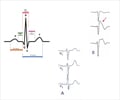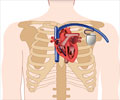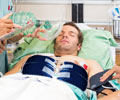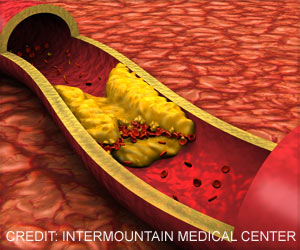Laser device placed on the heart identifies insufficient oxygenation better than other measures, thereby can predict cardiac arrest.

‘Laser technology could be used to monitor tissue viability in other operations in which tissues and organs are exposed.’





"With current technologies, we cannot predict when a patient's heart will stop," says John Kheir, MD of Boston Children's Heart Center, who co-led the study. "We can examine heart function on the echocardiogram and measure blood pressure, but until the last second, the heart can compensate quite well for low oxygen conditions. Once cardiac arrest occurs, its consequences can be life-long, even when patients recover."The device uses a technology called resonance Raman spectroscopy to measure whether enough oxygen is reaching the mitochondria, the organelles that provide cells with energy. In critically ill patients with compromised circulation or breathing, oxygen delivery is often impaired, making it hard for mitochondria to do their job. This is especially a problem for the heart, which has constant high energy needs.
The current standard for measuring tissue oxygenation, known as mixed venous saturation (SvO2), requires repeated blood draws, adding extra risk in critically ill patients. More importantly, SvO2 cannot tell whether oxygen supply is sufficient to meet the dynamic demands of heart muscle.
"We wanted to create an organ-specific, continuous, reliable readout of how adequately mitochondria are being fed oxygen," says Kheir. "This is the first demonstration of a device that can monitor mitochondria in living tissues to predict impending organ failure."
Using light to monitor mitochondria
Advertisement
The team created a metric they call 3RMR that uses light readings generated by resonance Raman spectroscopy to quantify oxygenation and mitochondrial function in real time.
Advertisement
Resonance Raman spectroscopy quantifies the fraction of mitochondrial proteins with electrons on them based on how light is scattered when a laser is shined on them. Under low-oxygen conditions, the gain in electrons causes these molecules to distort and, as a result, their spectrum changes.
"This system tells us how satisfied the mitochondria are with their oxygen supply," Kheir explains. The team used a precise laser and a complex algorithm to distill the information in real time.
"Distinguishing mitochondrial signals from other biological signals with accuracy and speed was the most significant scientific advance here," says Pendar CEO Daryoosh Vakhshoori, PhD, who oversaw the engineering aspect of the project.
Predicting cardiac arrest
Joshua Salvin, MD, MPH and Dorothy Perry, MBChB of the Heart Center, the study's co-first authors, tested the device in rat models. They found that reduced oxygenation of the heart corresponded with elevations in 3RMR, regardless of the cause of reduced oxygen delivery.
Elevations of more than 40 percent, measured after 10 minutes of low-oxygen conditions, predicted reduced heart contractility and subsequent cardiac arrest with 97 percent specificity and 100 percent sensitivity, outperforming all other measurement techniques.
The team further tested the device during simulated congenital heart surgery in a pig model. They were able to measure how satisfied the heart muscle was with its oxygen supply, something that cannot currently be done.
"Our likely first application of this device will be to monitor oxygen delivery during and after heart surgery," says Kheir. The current probe is the size of a pen, but eventually, the team would like to develop a smaller probe that could be left inside the chest, so patients could be monitored in the ICU during highest-risk times.
Future applications
Kheir and colleagues also believe the technology could be used to monitor tissue viability in other operations in which tissues and organs are exposed. Potential applications might include monitoring organs intended for transplantation and detection of dangerously reduced blood flow in limbs.
"I think there would be many surgical uses," says Vakhshoori, co-corresponding author on the study. "There really is no technology currently that can assess, in real time, whether oxygen delivery to a tissue is adequate at the level of the mitochondrion."
Kheir also thinks the tool could be helpful in cancer research, since mitochondrial function is central to cancer biology.
The team's goal is to seek FDA approval and commercialize a bedside monitor of mitochondrial oxygenation. In the meantime, Kheir and colleagues plan to seek approval to test the device to monitor heart patients.
Source-Eurekalert













